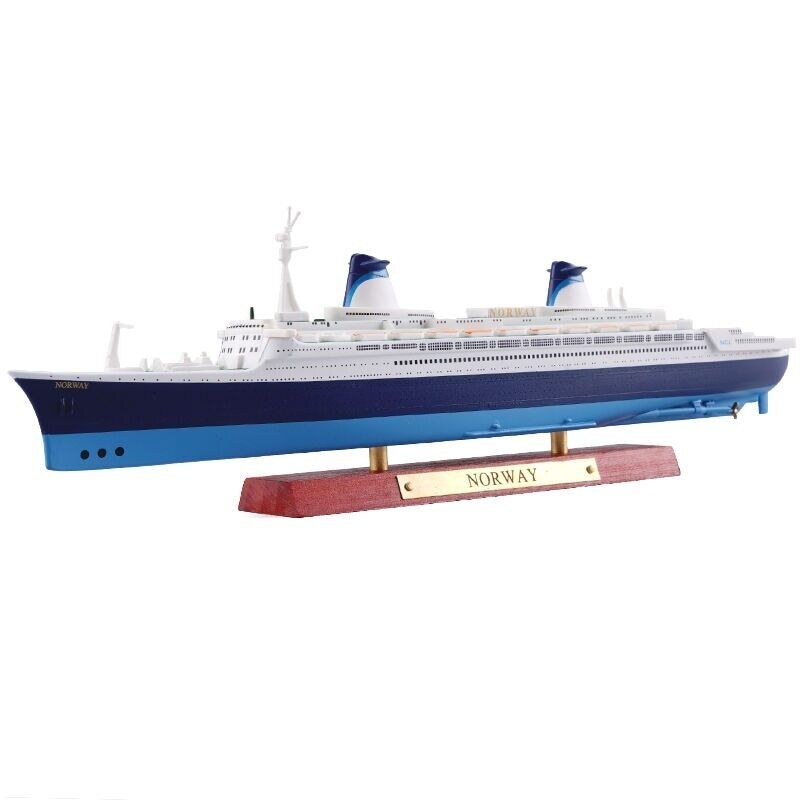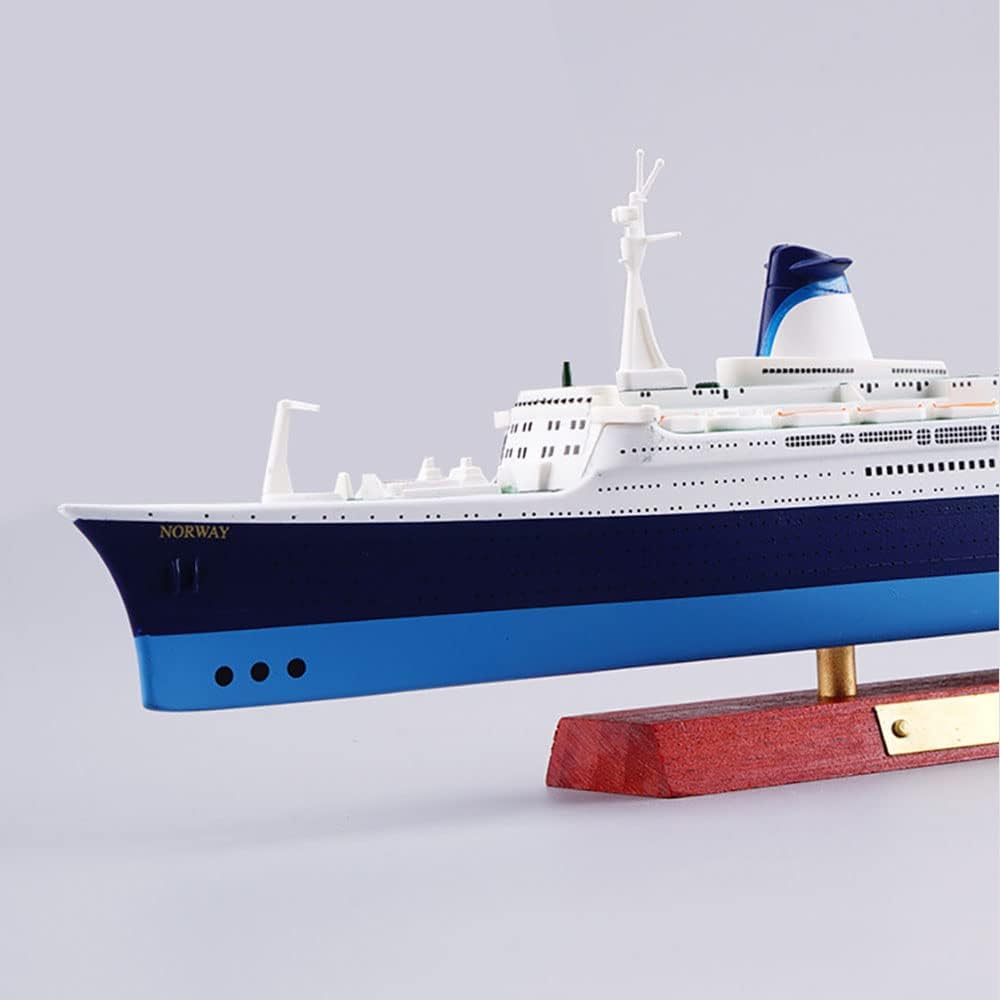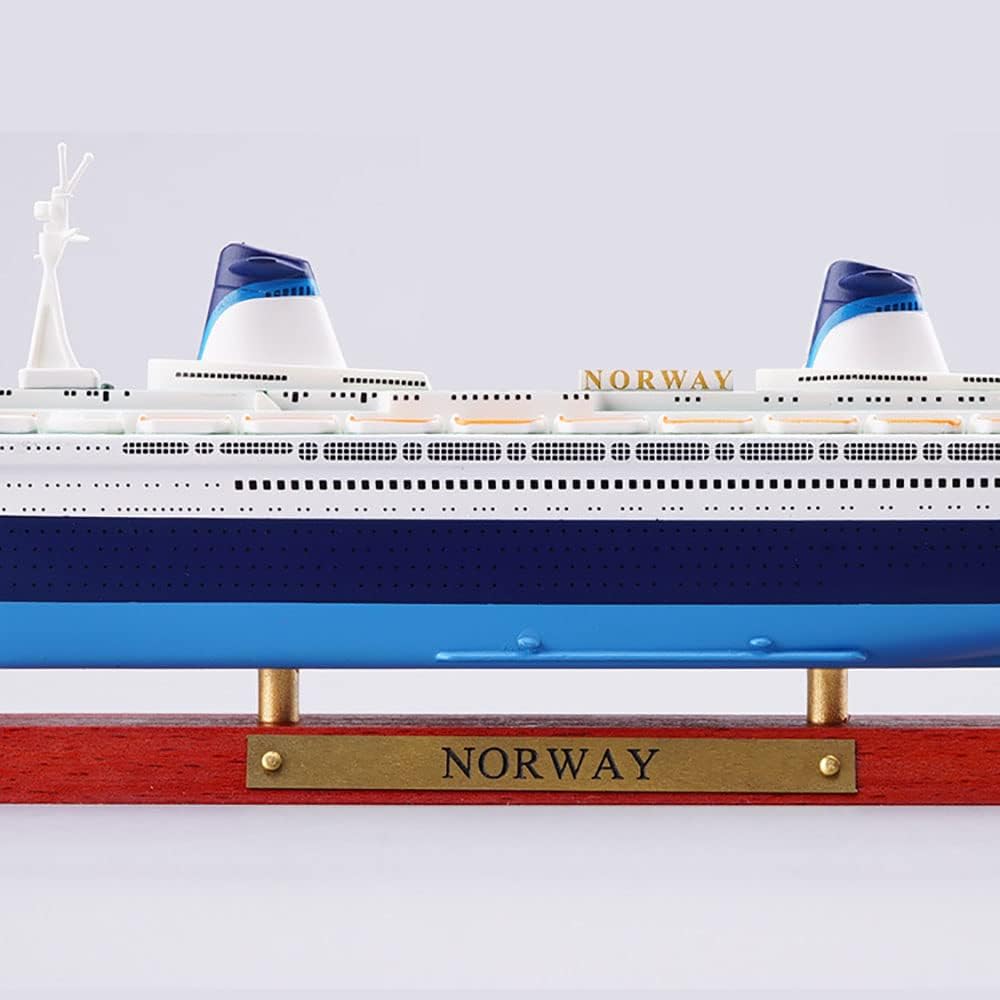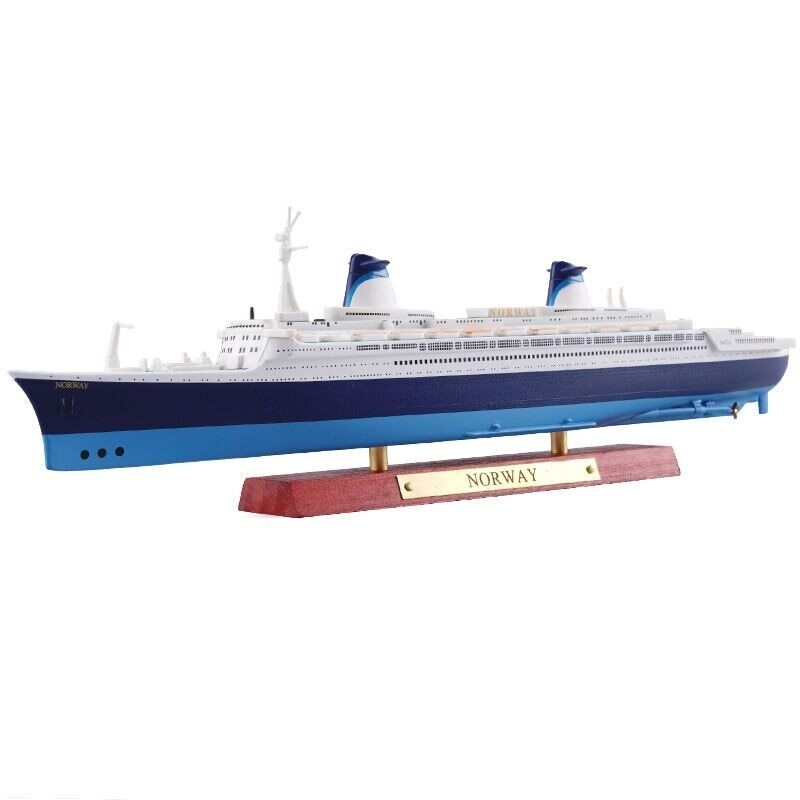old boy hobby
1/1250 Scale SS Norway NCL Ocean Liner Diecast Model Ship
1/1250 Scale SS Norway NCL Ocean Liner Diecast Model Ship
Couldn't load pickup availability
- pre-built and pre-painted, ready to display
- material: metal & plastic
- scale: 1/1250
- size: 25.5*2.5*5.5 cm
SS France was a Compagnie Générale Transatlantique (CGT, or French Line) ocean liner, constructed by the Chantiers de l'Atlantique shipyard at Saint-Nazaire, France, and put into service in February 1962. At the time of her construction in 1960, the 316 m (1,037 ft) vessel was the longest passenger ship ever built, a record that remained unchallenged until the construction of the 345 m (1,132 ft) RMS Queen Mary 2 in 2004.
France was later purchased by Norwegian Cruise Line (NCL) in 1979, renamed SS Norway and underwent significant modifications to refit her for cruising duties. She was renamed SS Blue Lady and sold to be scrapped in 2005, and scrapping was completed in late 2008.
Norway was registered in Oslo, given the call sign LITA (literally meaning "small"), and was re-christened on 14 April 1980. She was the first (and only) purpose-built transatlantic ocean liner that was remodeled to be employed exclusively in luxury cruise service. Her hull form, bow design, and accommodation layout had been designed specifically for the rigors of crossing the North Atlantic, year-round. In her remodeling for cruise service, she was given a more generous accommodation, as well as larger and more numerous public spaces for the cruise-type recreations. Mechanically, the four screw propulsion plant was reduced to two screws. And in a bid for economy, she was given a complete set of bow/stern thrusters to give her the flexibility she needed to bring her into harbour and to dock without resorting to the expensive tugboat operations that were standard procedure in the heyday of the transatlantic express liners. When her re-fit was completed, and on her maiden call to Oslo, Senior Steward Wesley Samuels of Jamaica, in the presence of King Olav V, hoisted the United Nations flag as a sign of the ship's international crew.
She began her maiden voyage to Miami that same year, amidst speculation about her future in the cruise industry. France had been built as an ocean liner: for speed; long, narrow, with a deep draft, as well as an array of cabin shapes and sizes designed in a compact manner more for purpose travel than languid cruising. But Norway proved popular, and made the notion of the ship being a destination in itself credible. Her size, passenger capacity, and amenities revolutionized the cruise industry and started a building frenzy as competitors began to order larger ships.
As cruise competition attempted to take some of Norway's brisk business, Norway herself was upgraded several times in order to maintain her position as the "grande dame" of the Caribbean. In September and October 1990, there was the addition of two decks atop her superstructure, adding 135 new suites and luxury cabins. While many ship aficionados believe the new decks spoiled her original clean, classic lines, the new private veranda cabins on the added decks were instrumental in keeping Norway financially afloat during the later years of her operation, as these became a common feature throughout the cruise industry. She received additional refits in 1993 and 1996 in order to comply with the new SOLAS (Safety of Life at Sea) regulations.
Competition eventually overtook Norway, and she even started taking a back seat to other, newly built ships in NCL's lineup itself. No longer the "Ship amongst Ships", NCL severely cut back on her maintenance and upkeep. She experienced several mechanical breakdowns, fires, incidents of illegal waste dumping, and safety violations for which she was detained at port pending repairs. Despite the cutbacks, the ship remained extremely popular among cruise enthusiasts, some of whom questioned the owner's actions in light of the continuing successful operation of Queen Elizabeth 2, which had become a well-maintained rival still operating 5-star luxury cruises and transatlantic crossings for Cunard. In spite of this, the cutbacks continued and problems mounted even as the ship continued to sail with full occupancy. A turbocharger fire erupted on Norway as she entered Barcelona in 1999, which pulled her out of service for three weeks. During one of the following cruises to Norway she broke down in Bergen with leaks to one of the propeller seals delaying sailing until repaired.
Slated for retirement, Norway sailed out of Manhattan's west side piers for the last time on 5 September 2001, on yet another transatlantic crossing to Greenock, Scotland, and then on to her home port of Le Havre, France. Her passengers would learn of the terrorist attacks on New York and Washington six days later, while in mid-ocean. As the cruise industry reeled from the aftermath of the terrorist attacks, her owners decided to place her back into service – operating bargain-basement cruises from Miami, after a brief cosmetic refit that failed to address her mounting mechanical and infrastructure problems.
On 25 May 2003, after docking in Miami at 5:00 a.m., Norway was seriously damaged by a boiler explosion at 6:37 a.m. that killed eight crew members and injured seventeen as superheated steam flooded the boiler room and blasted into crew quarters above through ruptured decking. None of the passengers were injured. The National Transportation Safety Board determined that "the probable cause of the boiler rupture on the Norway was the deficient boiler operation, maintenance, and inspection practices". On 27 June 2003, NCL/Star decided to relocate Norway, and she departed Miami under tow, although at first NCL/Star refused to announce her destination. She headed towards Europe and eventually arrived in Bremerhaven on 23 September 2003. NCL announced that constructing a new boiler was not possible but boiler parts were available to make the needed repairs. In Bremerhaven she was used as accommodation for NCL crew training to take their places on board the line's new Pride of America.
--copied from Wikipedia
Share












